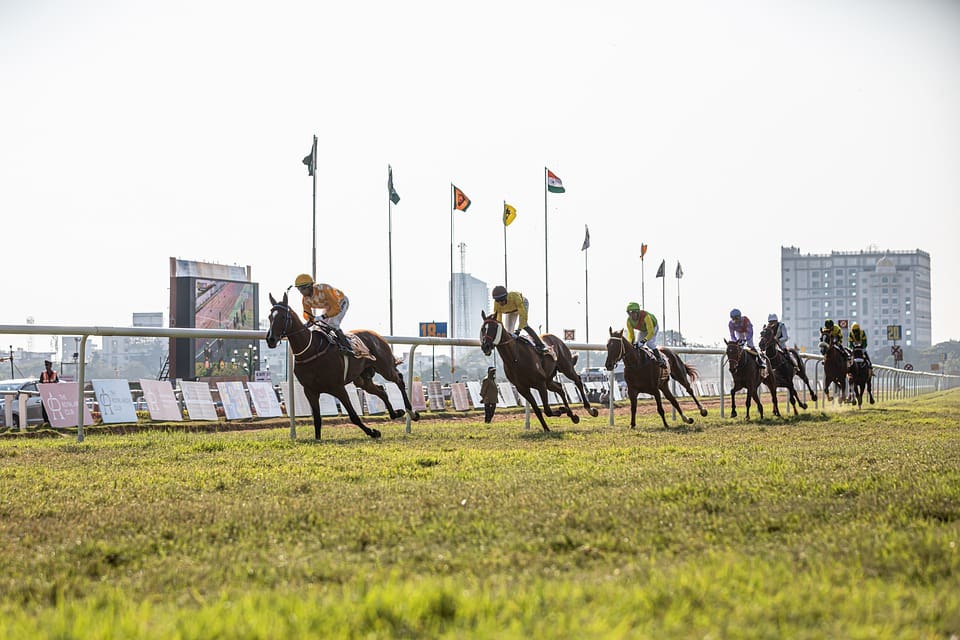If you have ever wondered what the term handicap means in sports, more specifically, what it means in horse racing, you’ve come to the right place.
Here is everything you need to know about what a handicap horse race is, how horse handicap ratings are determined, and why it even exists.
How is a horse’s rating determined?
Each horse has a rating; the higher the number, the better the performance. The rating system in horse racing takes into account several factors, including the following:
- Betting market expectations
- Past ratings of key runners
- Overall times
- Weights carried
- Margin spread through the field
- Section splits (late and early)
If a horse happens to have a 66 to 80 handicap rating, a suitable race for this horse to enter would be in a handicap racing band of 66 to 80 to keep things fair. When reading a handicap in horse racing, try to remember that the horse carrying the heaviest weight will have the highest rating.
The combined weight includes the weight of the horse, jockey, and equipment, which ultimately affects the speed at which it will gallop.
Another way of looking at it is that each horse is allocated different amounts of weight to try and even up its chances of winning against the other horses. More than 80% of the world’s biggest horse racing events have handicap races, including the Grand National and Cheltenham Festival.
Sports bettors use this information to help them place more strategic bets. For example, savvy bettors who plan on betting on the second day of the 2024 Cheltenham Festival (Wednesday, 13 March) will look for Cheltenham day 2 tips and handicap betting information that might help them on the day.
The remaining 20% of horse races that are not handicap races usually include horses that have yet to win a race (maiden races) or newcomers who haven’t ever raced.
If there was no handicapping or rating system, the best horse would win pretty much every race it entered, which would be boring for spectators to watch and unfair on the other horses/jockeys, and horse racing betting would be more like betting on the F1 Driver’s Championship.
The thing to remember is that all horses carry different weights depending on their ability, and the best horse is usually the one that carries the most weight (aka the top-weight horse). The higher a horse’s handicap rating is, the greater the weight it is required to carry.
Weights are generally displayed in stones and pounds according to their OR (official ratings). The highest weight carried in flat racing events is around 9st 10lbs, and the lowest is 8st.
In comparison, the lowest weight in National Hunt racing is generally 10st, and the highest weight carried is 11st 12lb. Horses are awarded their official ratings by each jurisdiction’s official body that oversees handicapping during a training session.
A horse receives its OR (aka handicap mark) either by winning a race or after its third race, whichever comes first. The role of a handicapper is to work out the initial OR by looking at the horse’s performance and then comparing it with the other horses from that same race who already have official ratings.
What are the biggest horse races still to come in England in 2024?
If you want to place a bet on any major upcoming UK horse races, the first big event is the iconic 2024 Cheltenham Festival, which is scheduled to take place between March 12 and 15. Next up is the Grand National on 13 April.
Final thoughts
The distribution/allocation enables horses of varying abilities to race competitively, and handicap horse races are there to even the field.
Finally, if you decide to bet on the 2024 Cheltenham Festival or Grand National, stick to playing at UK-licensed iGaming sites only. They are controlled by some of the iGaming industry’s most reputable operators and are known for having some of the world’s most competitive horse racing odds.









Leave a Reply
View Comments